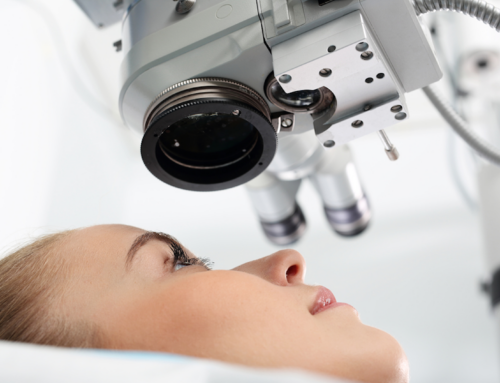Cataracts are cloudy areas on the lens of the eye and cause impaired vision. About half of all Americans of age 65 and older are reported to have cataracts. Cataracts are a result of protein buildup in the lens. These proteins create a cloudy patch and prevent light from entering unobstructed, through the lens and cause some vision loss. New lens cells form on the outside surface of the lens and the older cells get compacted into the center, resulting in a cataract.
Cataracts occur in several different ways. Age-related cataracts are developed in those who are older while congenital cataracts are seen in newborn as a result of poor development, injury or infection. Sometimes, congenital cataracts are developed during childhood. Secondary cataracts are a result of other medical conditions such as diabetes or exposure to UV light, diuretics, corticosteroids, radiation and toxic substances. Cataracts that are formed as a result of eye injury are known as traumatic cataracts. Other factors that may influence the risk of cataract development include air pollution, excessive consumption of alcohol and cigarette smoke.
Cataracts form very slowly and are rarely noticed until vision changes occur. Symptoms include filmy, blurry, cloudy or foggy vision. Changes in the perception of color due to lens discoloration, problems with glare, double vision and sudden changes in eyeglass prescriptions can also be signs of developing cataracts. If you notice any symptoms, be sure to visit a doctor for an eye exam to obtain a diagnosis.
Cataracts are treated in different ways. If the vision impairment can be corrected to a manageable level with eyeglasses, contacts or bifocals, then surgery will not be considered at that point. In the event that the vision loss cannot be treated and the vision impairment interferes with your lifestyle, you may have to opt for cataract surgery. The surgical procedure involves in the removal off the clouded lens and replacing it with an artificial, clear lens. Cataract surgery highly successful at repairing impaired vision and is the most frequently performed surgical procedure in the U.S.
As for prevention, the possibilities are uncertain. Since the exact cause of the condition is not yet isolated, there is no known method of preventing them. The best option is to have your eyes regularly examined, especially if your family has a history of eye related conditions or are suffering from glaucoma or diabetes. It is recommended that adults over 50 see a doctor annually.
 New Address:
New Address:



